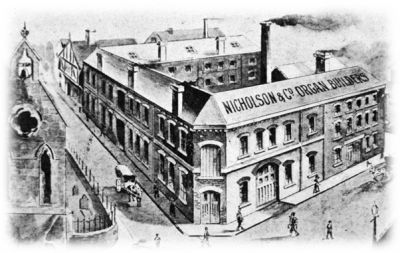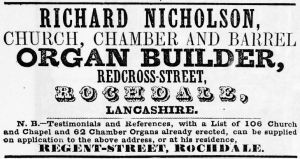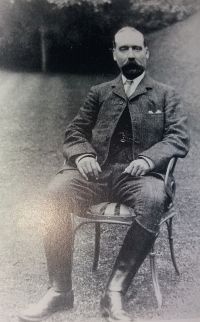
Many other builders were doing good work in this quarter of the nineteenth century, but the finest specification of all came from Nicholson of Worcester, who then as now turned out good work.
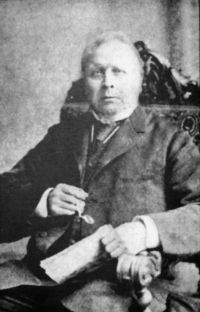
John Nicholson (1815–1895) came from a family of organ builders in the Rochdale area. His father Richard started building organs in the 1820s, and one of his commissions was for a new organ for what was then the Countess of Huntingdon’s Methodist Chapel in Worcester. This was completed in 1840. Richard’s son John stayed on in Worcester and set up his own firm in 1841. His work soon brought the firm to the attention of organists of discernment.
Early notable John Nicholson instruments were installed at the Worcester Public Hall, which was acclaimed as the finest English organ of the day, at Great Malvern Priory, and Gloucester Shire Hall. The Worcester Public Hall organ of 1854 was followed in 1861 by an instrument of similar size for Manchester Cathedral.
John Nicholson’s ability to build effective, musical and reliable church organs for a modest price rapidly endeared his firm to the many parish churches up and down the country who in the second half of the nineteenth century were in need of new organs. Hundreds of churches, from the south coast of England to the north of Scotland, as well as clients in such far-off countries as China, Australia and New Zealand ordered new John Nicholson organs. It was later observed that John Nicholson ‘did as much as anyone to establish the great Victorian school… the few remaining untouched instruments show that the voicing was of the best.‘
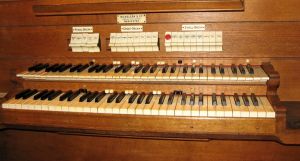
One of John Nicholson’s successors was Arthur Whinfield (1863–1917). As well as being a noted amateur photographer, he brought many technical innovations to the firm’s work, such as pneumatic action and his own patent key-touches. He also adopted a more Romantic style of voicing, with higher wind pressures, leading to fine instruments such as Birmingham Oratory (1909) and Leominster Priory (1924).
Stanley Lambert took over in 1935 and ran the firm for nearly 40 years. He patented his own electro-pneumatic action, many of which are still giving sterling service with no restoration. Highlights of his period include the large instruments in St Stephen’s Church, Selly Park, Birmingham (1949) and All Saints’ Church, Cheltenham (1952). He also led the move of the business from its original home in Worcester to new premises in Malvern in 1956.
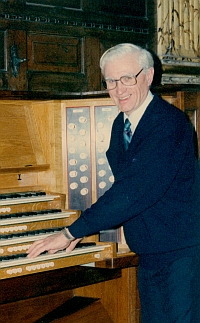
A new era dawned in 1974, when organ builders Bob Kitchener, Raymond Todd and the celebrated voicer Dennis Thurlow took over the firm. The next two decades saw a trend towards neo-classical style, in instruments such as St Mary’s Church, Warwick (1980) and notable rebuilds such as Birmingham Oratory (1987) and St Philip’s Cathedral, Birmingham (1992).
The firm thrived under the tenure of Andrew Moyes (MD 1994-2018) supported by Guy Russell as tonal director, in a period that saw many technical innovations and a gradual return to a more Romantic tonal style, in major new instruments such as Portsmouth Cathedral (1994), Southwell Minster (1996), Llandaff Cathedral (2010/13), Dean Close School, Cheltenham (2014), and Holy Trinity Cathedral, Auckland (2017), Llandaff and Auckland both among the largest in the firm’s history. Notable rebuilds include those of Gloucester Cathedral (1999), Great Malvern Priory (2004), Bridlington Priory (2005) and St Michael’s, Cornhill (2010). The firm also moved to new premises just outside Malvern.
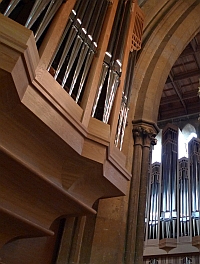
The firm continues to flourish today. Under the leadership of Andrew Caskie, managing director since 2018, supported by head voicer James Atherton, the team seeks to maintain the ethos and character of the firm’s founder and his instruments. New instruments are characterised by clear, English choruses that John Nicholson would recognise and affirm, combined with warm Romantic colours that together make organs that are vivid and beautiful to the eye and the ear.
Understanding the ethos and style of former generations is a vital component of our approach to historical restoration, in which we try to respect, and where necessary, recreate, the original character and integrity of instruments built many generations ago.
